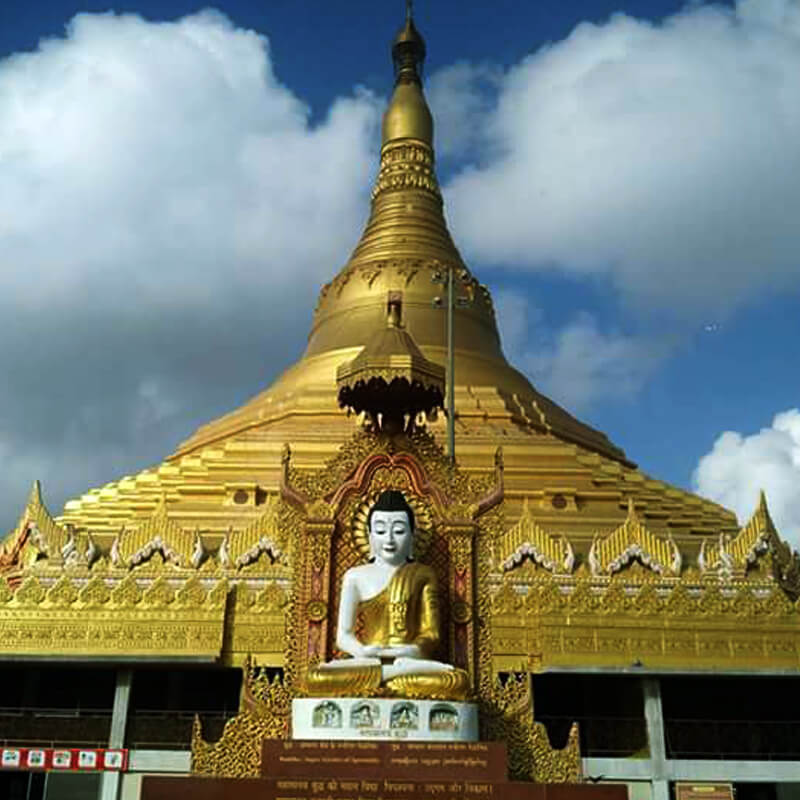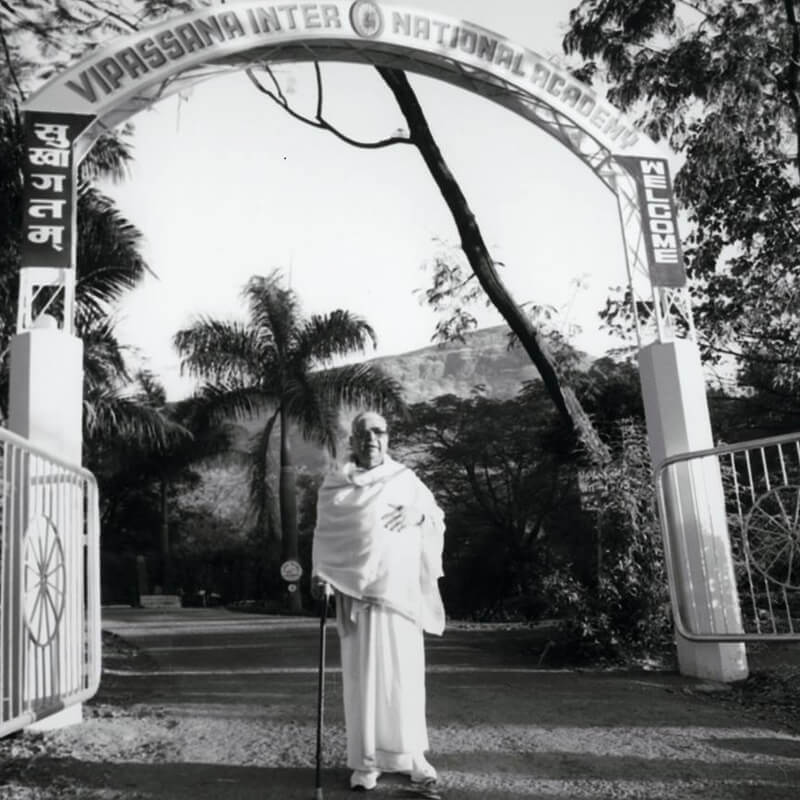In 1981, Goenkaji stood at a watershed. He had devoted more than a decade to planting the seeds of Dhamma in India, and since 1979 he had brought the teaching to many other countries. The demand for courses was growing strongly but there was only so much he could do by himself.
Almost from the time he first came to India in 1969, he had explored the possibility of sharing teaching responsibilities with others. In particular, he had encouraged several fellow students of Sayagyi U Ba Khin to conduct courses in association with him. But for various reasons these experiments had not succeeded.
Goenkaji decided, therefore, that he must look to the next generation of meditators who had learned Vipassana from him. As usual, in December 1981, many of his old students from around the world gathered at Dhamma Giri for a series of intensive courses. He began discussions with a handful of his more experienced Indian and Western students, asking them to take on the role of assistant teacher and to conduct courses as his representatives, using his recorded instructions and discourses.
This was the beginning of the Assistant Teacher program, which has enabled hundreds of thousands of people to learn Vipassana as taught by S. N. Goenka.
There were only eight people in the first group of assistants announced by Goenkaji: John Beary, Graham Gambie, Bill Hart, Norm Schmitz, N.H. Parikh, Laxminarayan Rathi, Dr. B.G. Savla and Ram Singh. They were all men; it was an experiment and Goenkaji did not want to take the chance of offending people in some Asian countries before the experiment had been shown to work. But right from the beginning it was understood that women would play an active role, starting with the wives of many of the first appointees.
Today, in every region of the world, there are hundreds of assistant teachers and they are the ones through whom new students encounter Vipassana. They also guide centers and trusts. But at first the appointment of assistant teachers was a very startling development, hard to accept for both the assistants and many old students.
To the new assistants Goenkaji counseled patience and also humility. After all, it had taken him years to earn the respect of his students. The assistants should not expect to be treated in any special way. And if someone showed respect, assistants should bear in mind that it was not for them; it was for the Teaching they had the good fortune to represent. They should simply and quietly do the task their Teacher had assigned to them, trying to set aside ego and serve selflessly. If they did that, they would be successful and would deepen their own understanding of the Dhamma.
All this he explained in many hours of discussion with the new assistants and their spouses in the interview room of his residence at Dhamma Giri. He and Mataji sat in their chairs, and the assistants sat in a semicircle on the carpet before them. These were hours of laughter and storytelling, of reminiscences both sweet and painful, of learning and sharing; unforgettable hours.
But it was all for a specific purpose: to help the assistants understand the job they had been given and how they should do it. Very soon, they knew, they would be sent on their way to start their work—just as the Buddha sent out his small band of followers at the end of the first rainy season after his Enlightenment. The knowledge that this lay ahead made the time spent with Goenkaji and each other especially precious.
Courses led by the new assistant teachers soon began to be organized, first in India and then in the West. There were plenty of problems. For example, the very first course conducted by an assistant took place in March 1982 at the Burmese Vihara in Bodh Gaya, the site of many of Goenkaji’s early courses. But there had been a mistake about dates, and until Day 4 a pilgrim’s group slept in what should have been the meditation hall. Central America was the site of another early course, but after it got under way the local authorities became suspicious and carted the assistant and everyone else off to the police station for questioning. Tapes sometimes broke or were missing; sound systems failed. The kitchen might be overstocked or short of food; the servers were enthusiastic but, like the assistants, they were learning on the job. Within a short time assistants and Dhamma workers became more experienced, the problems lessened, and more and more courses were offered.
But still the demand continued to outstrip the supply, and year by year Goenkaji appointed more assistants. Within two years these included women as well as men, and the model developed of having a male assistant to deal with male students and a female assistant to deal with female students
As the years passed, there were other changes and developments. But what is remarkable is how smoothly the transition took place—from one individual presenting the entire teaching on his own, to hundreds of people acting on his behalf, all working according to the same rules and principles.
Today around the world, there are people who have never met Goenkaji in person. But they have been enabled to learn the Dhamma from him with the help of his appointed representatives. As much as those who sat with Goenkaji in the early days, they too are entitled to regard him as their Dhamma Father.
In the two years since the first assistant teacher–led course was held [i.e. 1982 to 1984], over 100 such courses have been given, allowing many the opportunity to practice and establish themselves in the technique of Vipassana meditation. The success of these courses is indicated by the fact that the demand for them continues to grow sharply. In order to meet the increasing demand, Goenkaji has appointed several more assistants. In this way, the Dhamma will be able to spread more widely than ever before.
(Courtesy: International Vipassana Newsletter, March 2012 issue)






